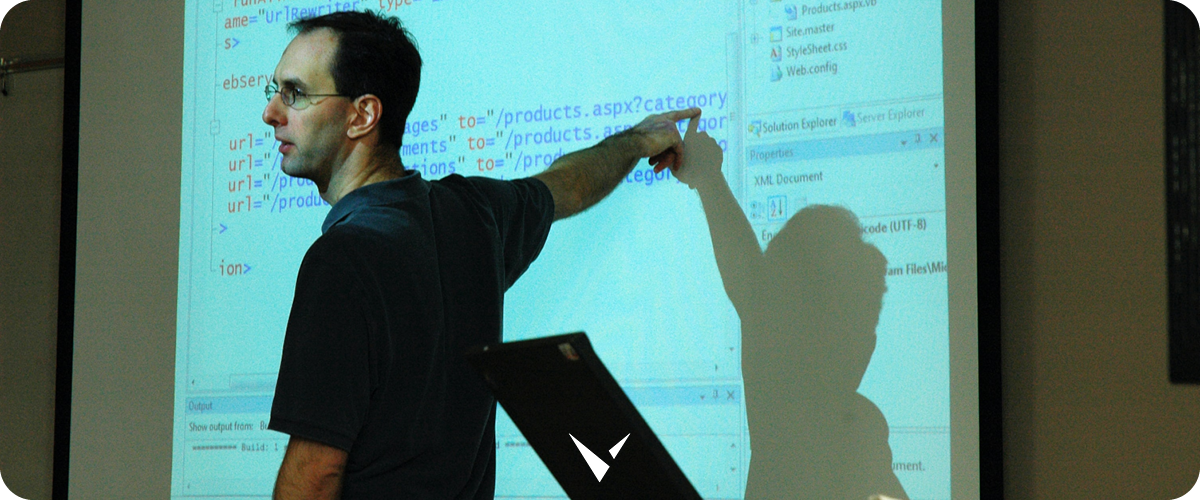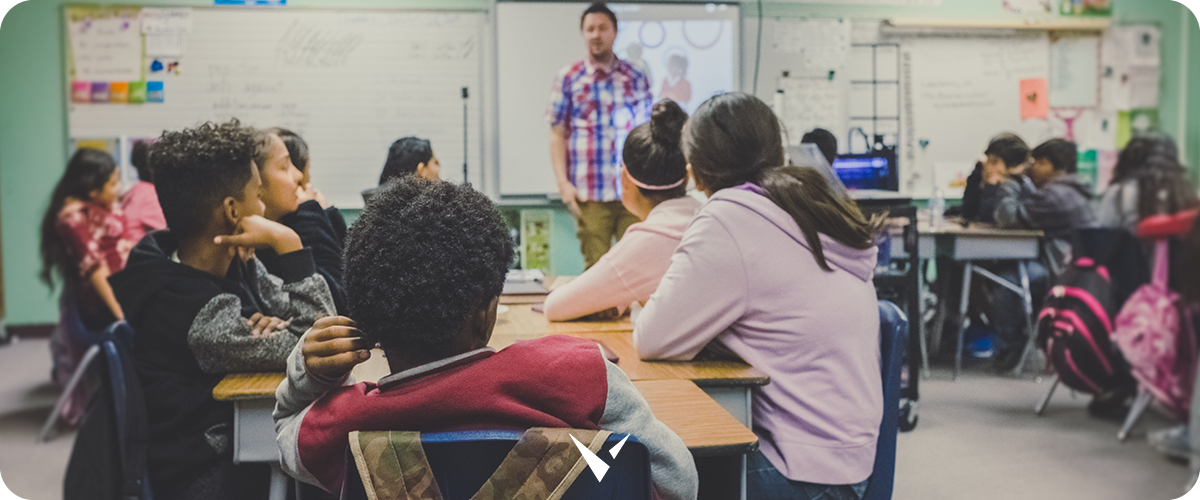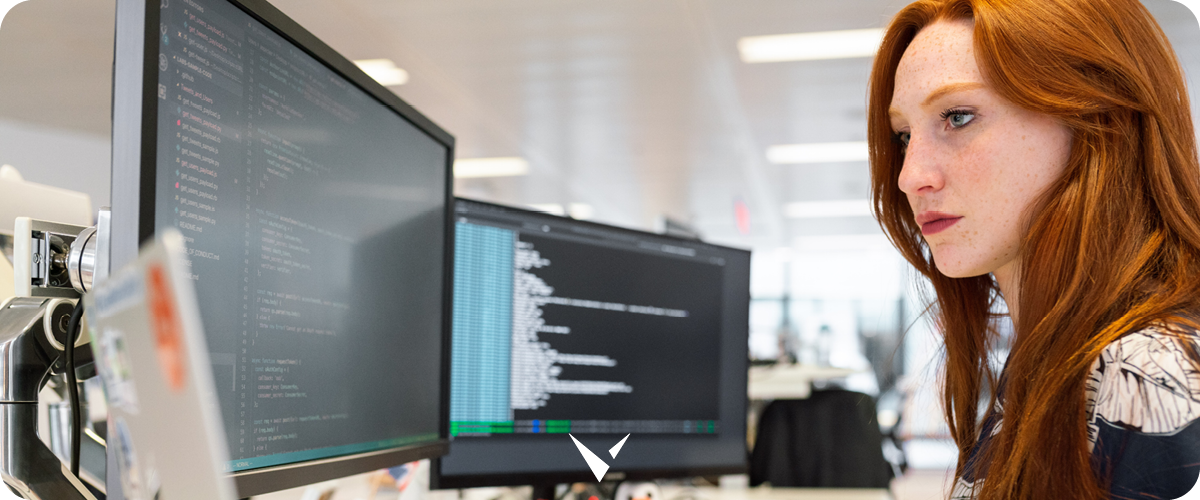Maximizing the ROI of EdTech in the Classroom
The world of EdTech is exciting and dynamic, having the capability to engage students in the learning process like never before while also enabling teachers to customize lessons per learner and track students' progress. Even so, when faced with the ever-changing array of innovative technologies, it's easy for school leaders to reach for the newest shiny "solution" and end up squandering money on tech that they don't really need.
Investing in the wrong technology too quickly can not only impact the classroom negatively but can also result in financial losses. In fact, according to a recent survey, the hidden costs of implementing ineffective technologies can be as high as $220 per student.
That said, while school districts, private schools, and universities have already invested in dozens of apps/learning tech solutions, if they want to maximize the ROI of EdTech, they need to channel their investment in technologies that optimize both the teaching and learning experience.
One such technology is the screen mirroring solution. Besides allowing the entire class to engage with the app, screen mirroring technology also facilitates a more personalized teaching process –the teacher can use specific apps with some students and use different apps with other students for better engagement.
In this post, we'll walk you through all you need to know about EdTech and how you can maximize the ROI of EdTech in the classroom.
How to Incorporate EdTech into the Classroom
EdTech comes in handy in the classroom in a myriad of ways. Here is an outline of some of the ways EdTech can be used in the classroom:
On-Demand Online Learning
Plenty of students learned what it meant to become a virtual student during the lockdowns of 2020 and 2021 due to the COVID-19 virus. It was certainly a learning experience for all, but almost every school district and higher education institution realized a physical presence was not always necessary. Teachers and students alike can access all kinds of virtual learning tools and material for online learning at any time and anywhere.
Virtual Classrooms
Virtual classrooms are likely here to stay, particularly for higher education and summer school programs. Without the need to be physically present in a classroom, students can more easily enroll in supplemental classes, advanced courses, and summer programs.
By offering virtual classrooms, educational institutions give students more options to choose from and find the most ideal way of learning. Some schools are even moving their mass core curriculum, such as Economics 101, to virtual classrooms to eliminate the problem of these physical classrooms filling up where students are unable to sign up until the following semester.
Access to Digital Resources
Today, many schools are offering free online resources such as podcasts, webinars, eBooks, and research papers for students to use in their projects and overall learning.
Blended Learning
Blended learning combines in-person and online learning to accommodate different learning preferences and ensure students with different abilities can be equally successful. EdTech changes the entire classroom experience by helping teachers build customized lessons with less effort and making learning more engaging for students. With blended learning, education institutions can save resources and costs without compromising the quality of education.
Gamification
Gamification has become more popular than ever for both classrooms and enterprises. Gamification refers to the process of leveraging game-like simulation activities to make the learning process more interesting and competitive. After all, video games are a mainstay for a large number of students.
Gamification makes learning a bit more motivating, rewarding students with points or a similar system as they achieve goals. The effectiveness of gamification has led to Tedx Talk shows such as The Power of Gamification in Education to advocate for the use of games to engage and motivate learners.
Ways EdTech Is Transforming Teaching Methods

Here are some of the ways education technology is making the teaching process more effective:
Smart Classes
Today's classrooms aren't limited to blackboards and whiteboards. Many districts and higher education institutions have smartboards, interactive flat panels, and wireless screen mirroring devices that bring the classroom to life through digital displays. Educators can choose to blend different teaching techniques as per a given topic, subject, and students' learning abilities.
Digital Books
Look at what most students these days are carrying in their backpacks, and you likely won’t find many printed textbooks. Now, their syllabus and textbooks are digital copies and shared as PDFs and Kindle books so that students can easily access and view them on their devices.
Students can download a PDF on their device and view it, even without an internet connection, giving students the freedom to study no matter where they are. On a side note, digital books promote environmental sustainability since fewer papers are involved in the learning process.
Online Research
Long gone are libraries and encyclopedias. For decades, students do all of their reading and research online. With EdTech, teachers can help students learn how to search online for what they need. Teachers and students can also work together to take a deep dive into online content, using screen mirroring as a great way to share content with each other.
Automated Question Generator
EdTech in the classroom makes creating and distributing surprise assessment tests easy and fast. Various AI-based education platforms can automatically generate questions from provided texts using natural language algorithms. Students can take these tests directly from their devices, and the results are instantaneous, giving teachers an effective and convenient way to gauge how well their students have grasped a given topic or subject.
Online Sessions and Webinars
Teaching is no longer deemed to be a one-way communication where educators pass on knowledge, and all students have to do is listen. Online classes and webinars are interactive, where students can raise their hands, engage in dialog, share content, ask questions, offer their viewpoints, and help each other go deeper into topics with teacher guidance.
Online Assessments
Paper tests not only waste resources, but they aren’t flexible or customizable without a lot of teacher effort. When assessments are conducted online:
- Teachers can use software to prepare customized tests and grade them.
- Students can take the tests from wherever they are working as long as they have an internet connection.
- Education institutions are saved from spending on resources such as printing papers for the assessments.
- Teachers can provide students with results faster, given that they don't have to engage in the tedious process of checking every student's test–the assessment software does most of the work.
Communities Beyond the Classroom
Education institutions can help students build strong relationships that extend beyond the classroom. The educators and the students can interact with others using various apps and platforms connected via the internet. For example, many classrooms use EdTech to “adopt” another classroom on the other side of the world, engaging with each other to learn about different cultures and share thoughts on certain topics.
Which EdTech Solutions Are Ideal for the Classroom?

While EdTech has opened up a whole new classroom environment, being together is still ideal for many. Fortunately, schools can have the best of both worlds, bringing students together in person and virtually as needed. Whereas some institutions have been early adopters of education technologies, others were more hesitant and unsure of the pros and cons. Some education institutions are still insistent on using outdated systems. Early adopters are faring well and are reaping the benefits of using EdTech in the classroom. Some of the technologies that they use in the classroom include:
1. Screen Mirroring Technology
Screen mirroring technology allows devices such as computers, phones, and tablets to wirelessly share their screens on the classroom display. With this technology, teachers can roam and engage with the display and the students from anywhere.
Screen mirroring technology creates a more dynamic learning space such that teachers can involve students more in the classroom. Teachers can mirror various device screens to any display or multiple displays at any one time so that they can move freely and engage better with the students.
Students benefit tremendously as well. They can share their work in real-time, take screenshots, annotate, collaborate, and provide feedback for a highly collaborative, social classroom experience. Additionally, multiple students can share their screens simultaneously, creating a productive two-way learning environment while the teacher remains in full control.
2. Smartboards and Interactive Flat Panels (IFP)
These tools allow images from a computer to be displayed onto the classroom board using a digital projector. The educator or the student can then engage directly with the images. Advanced smartboards offer touch screens such that educators or even students can customize the content that's displayed on the screen.
What's more, some screen mirroring platforms integrate with IFPs so that teachers can enjoy all the features of screen mirroring technology with their IFP in one place.
3. Audio/Visual Equipment
Camera and audio equipment are a mainstay in many classrooms, allowing teachers and students to record various activities. Teachers often use discreet, wearable microphones to ensure every student can hear them. Screen mirroring technology enables teachers and students to share their work on central displays. A/V equipment like this help students hear and see what they need so they are potentially less distracted.
4. Smart Devices and Laptops
Students can take notes on all kinds of tools, such as recorders, laptops, tablets or other smart devices. Screen mirroring technology is also useful for students who have difficulty seeing the board at the front of the classroom, getting a mirror image of what’s on the board onto a connected device. Technology enables educational institutions to make their classrooms conducive for all students.
5. Google Classroom
Teachers can use Google Classroom in different ways, including organizing assignments and creating a collaborative learning environment for the students. Google Classroom is a comprehensive solution where educators can create classes, connect with learners, distribute and grade assignments, and provide feedback on the assignments.
Educators can use Google Classroom together with screen mirroring technology to improve the learning experience. Screen mirroring technology allows teachers to share their Google Classroom screens with students wirelessly on a centralized classroom display.
6. Online Grading Systems
Communication is a vital element in education. It helps administrators, teachers, parents, and students keep in touch and discuss issues such as students' strengths and areas for improvement. Online grading systems open and facilitate lines of communication where teachers can analyze a student's attendance patterns, post grades, and manage transcript data.
While these technologies don't fundamentally change the way educators teach or how students learn, they enhance the current learning and teaching practices by making them more efficient. Education technology can also expand the capacity of teachers to implement new teaching practices that would otherwise be challenging to adopt had they been using traditional teaching methods and solutions.
How EdTech Can Maximize ROI in the Classroom
A question that always arises time and again is whether education-related technology can improve ROI in the classroom and the schools that invest in them. This is understandable given that investing in these technologies requires that these institutions adjust their budgets. What's more, there's also the issue of whether or not these technologies will improve the quality of education and the learning experience.
Ultimately, when it comes to the question of whether or not EdTech can help maximize ROI in the classroom, the answer is a resounding yes, and for a myriad of reasons:
1. It Saves Precious Time for Educators
We might often think that the best way of assessing the quality of education is by looking at GPAs or standardized tests. However, the truth is that much of what students learn is dependent on the time allowed in the classroom.
EdTech enables educators to have their time freed up. This can result in more personalized and focused attention on the students. For instance, suppose a teacher is constantly focused on administrative tasks, they can be distracted from the overall lesson they provide.
The beauty of EdTech solutions is that they enhance the classroom experience. While in the past teachers had to walk around the classroom passing out assignments and explaining instructions; these days, students can access learning resources digitally whenever they want, from wherever they want. This can help with their overall understanding of the material.
Also, while students and educators were initially relegated to the classroom for learning, education technology enables them to access learning materials and shared lesson plans at any time. As such, teachers don't have to come up with a fresh lesson plan every day for every subject. They can use technology to share their plans and access other teachers' plans, even from those outside of their own school.
2. Increased Classroom Engagement
It isn't easy to be passionate about something you can't truly engage and remain involved with. While technology may not necessarily ensure that a student becomes successful, it allows for more engagement than ever before. Educators can receive feedback from this engagement and adjust their teaching methods or lessons accordingly.
Technology draws students deeper into a topic by allowing them to find more resources on it and work at their own pace. They can leverage the existing lessons and further research a topic to learn more about it.
Today, thanks to education technology and the fact that many schools are allowing students to bring their own devices, students can easily collaborate at any time on topics that interest them and help each other have a better grasp of those topics. Whether students are working independently or as a team, collaborative EdTech solutions can enhance student engagement.
3. Flexible Curriculum
Education used to be rigid, with specific curricula and textbooks that had to be followed rigorously. Today, we understand that learning can be a more agile process where teachers can personalize their lessons and teaching techniques to meet every student's needs. Students can also interact with materials outside of the classroom and understand them in their own unique ways.
Given that information is more available and diverse than ever, students can explore various digital resources to help them truly grasp a given subject instead of following a specific pre-made package. Additionally, education technology provides teachers with efficient channels where they can send learning resources to students easily.
4. Helps Students With Different Learning Capabilities
Not all students learn or retain information in the same way or at the same speed. Using the same teaching style for all students may be disadvantageous for some students who may need a different teaching approach. Education technology allows teachers to differentiate instructions and modify information to meet the appropriate learning capabilities of their students. Students can, therefore, learn at their own pace and in a way that best suits them for better outcomes.
In a nutshell, when technology is used in the classroom, there are higher chances for students to excel in their classroom, given that teachers can personalize the lessons to meet the learning capability of a student or a group of students.
5. Easy Access to More Learning Resources
Today's students have grown accustomed to searching for information online whenever they want to learn something new. By doing so, they have become used to interacting with eBooks, search engines, educational and how-to videos, and online forums and platforms. All these resources are available in today's classrooms and are easily sharable via screen mirroring technology.
Naturally, educators can use technology for other purposes other than learning. They can use online tools to allow remote access to students, leverage streaming to provide tutoring lessons, and even use gamification elements in a custom educational software to provide centralized education resources more efficiently and in a more engaging way.
6. Tech Adds Fun to Learning
It's not unheard of for students to get bored during a class, more so in classes that are more traditional. This is because they are used to technology being a big part of their everyday lives. As such, its absence immediately puts them off. Incorporating technology into the lessons can boost student interest in a class. Yet, technology can do more than that–it can add fun to the classroom.
By using gamification, teachers can generate further engagement with their students. Games themselves are an excellent way of teaching specific concepts in various subjects such as Math, Chemistry, and Physics. Of course, there are other ways of adding fun to the classroom—educational robots and interactive videos are other alternatives that can add excitement to the classroom while ensuring high educational value.
7. It Prepares Students for Their Careers
Traditional education might have been excellent at providing fundamental concepts pertaining to certain subjects, but it is getting further away from the prevailing workforce reality. Today, most jobs require tech knowledge. At the very least, today's jobs require that you have digital alphabetization, which most students today have to learn on their own. Educational institutions can help students acquire tech knowledge that may come in handy in the future.
By encouraging the use of digital solutions such as mobile apps, electronic whiteboards, websites, video calling apps, and more, educators can help students learn how to work with these solutions. Naturally, all these solutions would be boosted by including tech-related subjects in the education program from an early age.
When properly implemented and optimized, EdTech in the classroom is a powerful learning tool. It facilitates better engagement, inclusive learning, and collaboration between teachers and students while also creating a holistic learning environment.
Choose a Screen Mirroring Technology for Your School

It is essential to choose a wireless screen mirroring solution designed specifically for the education industry. It must work with any device, display, media type, number of classrooms or users, and learning styles. With this dynamic screen mirroring technology, educators can present any media—school app or YouTube video—to the classroom from their own devices wirelessly connected to the physical piece of screen mirroring technology in the classroom.
To foster a highly interactive and collaborative learning environment, make sure students can annotate, share their work in real-time, take screenshots, and give feedback.
As you evaluate solutions, look at Vivi, the only wireless screen mirroring and digital signage tool built for the education sector. Book a demo today to maximize the ROI of your school's district classroom using technology.
